When it comes to choosing the perfect dress, it’s easy to focus solely on style, color, or design, often overlooking a crucial factor that can significantly impact your overall experience-the material it’s crafted from.
Dress materials play a pivotal role in determining not only the dress’s quality but also its comfort and aesthetic appeal. Whether you’re searching for a casual everyday outfit or an elegant gown for a special occasion, understanding the diverse world of dress materials is essential.
In this guide, we’ll delve into the most common types of fabrics used in dressmaking, empowering you to make informed choices that elevate your fashion game.
1. Chiffon
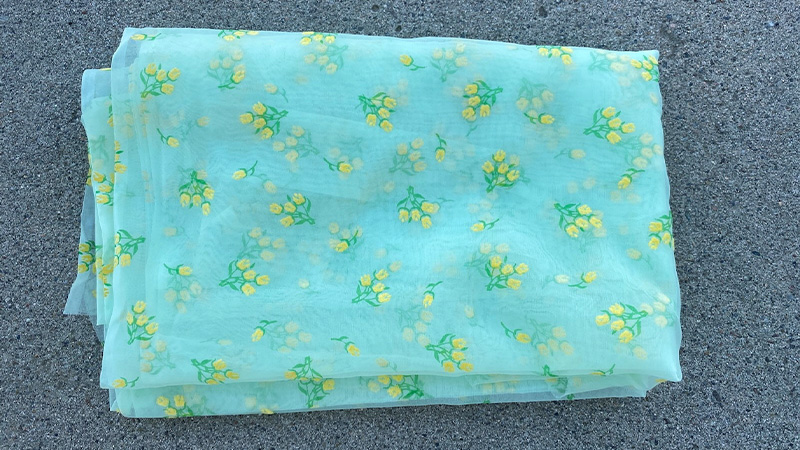
Chiffon is a type of sheer fabric that is lightweight and balanced. It is made from plain-woven fibers and has a gauzy feel, similar to gossamer. The yarn used to create chiffon is often crepe yarn, which has a tighter twist than standard yarns.
The yarn is twisted in an alternating S- and Z-twist pattern, giving the fabric a unique texture and strength. It is a popular choice for clothing, as it is lightweight and breathable, as well as stylish.
Chiffon is also a popular fabric for evening wear, such as gowns, due to its delicate appearance and airy feel. Additionally, chiffon is often used in crafting and decorating, as it can be manipulated into various shapes and textures.
2. Velvet
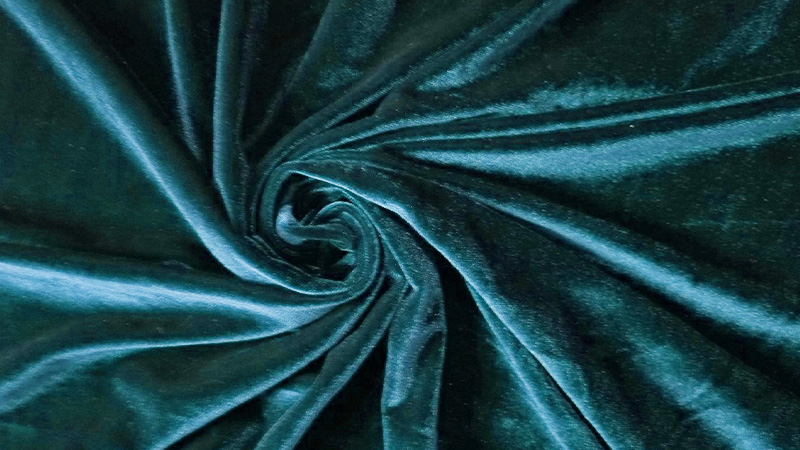
Velvet is a luxurious type of fabric that has been used throughout history for clothing, upholstery, and decor.
It is created by weaving together two layers of fabric and then cutting the pile of the upper layer to create a short, dense pile that is incredibly soft to the touch. This is what gives velvet its distinctive soft feel.
The cut threads are evenly distributed, which adds to the fabric’s smoothness and richness. By extension, the word ‘velvety’ is used to describe anything that has a similarly smooth and plush feel.
In the past, velvet was primarily made from silk, as it is strong and supple and has a beautiful sheen. However, today velvet can be made from a variety of different fabrics, including cotton, polyester, and rayon.
These fabrics are often less expensive than silk and can create a range of different effects, from ultra-smooth to rustic and textured. Regardless of the material, velvet will always remain a classic fabric that is perfect for creating an elegant and luxurious look.
3. Organza
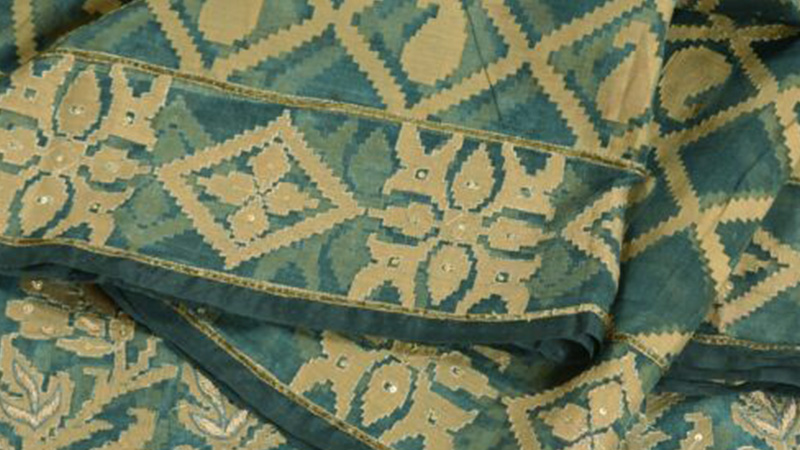
Organza is a delicate and sheer fabric that is traditionally crafted from silk. It is created from a plain weave and is lightweight, making it ideal for creating garments and accessories with a floaty and feminine feel.
Although traditionally made from silk, many modern organzas are now woven with synthetic filament fibers such as polyester or nylon. This synthetic material is often cheaper to produce and can be dyed in a variety of colors, making it a popular option for many fashion designers.
Silk organza is still produced in many mills along the Yangtze River and in the province of Zhejiang in China. The experienced artisans who create this fabric take great care to make sure it is of the highest quality, lending it an extra touch of luxury.
The Chinese people have been weaving silk organza for centuries, making it an important part of their culture and heritage.
4. Crêpe
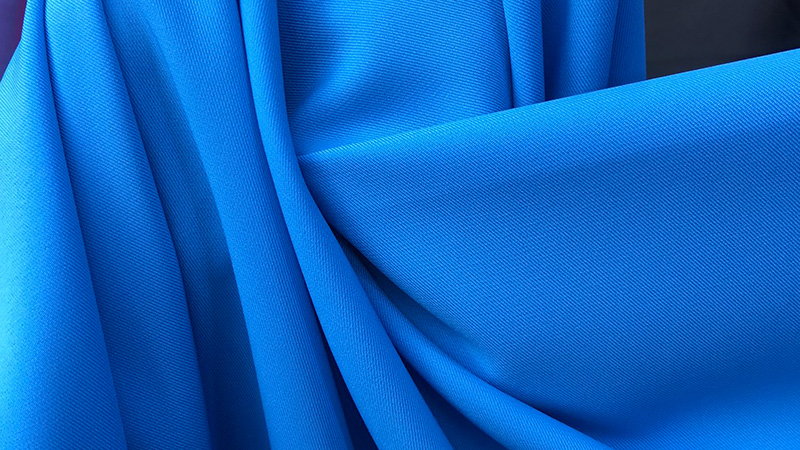
Crêpe is a type of fabric that is made from a variety of materials, such as silk, wool, or synthetic fibers. It has a distinctive crisp and crimped appearance, which gives it a unique look.
The term “crape” is often used to refer to a specific type of crêpe that is associated with mourning. Crêpe was also known in the past as “crepe” or “crisp”.Crêpe has been used in clothing and home decor for centuries.
It is a lightweight fabric that drapes well, making it ideal for creating elegant garments and accessories. It is also used to make curtains and draperies for the home, as it is able to hold its shape and color for a long time.
It is often used in wedding dresses, as it adds a unique texture and volume to the design. The crisp and crimped texture of crêpe makes it a popular choice for making accessories, such as scarves and hats.
It can also be used to make decorative items, such as table runners and napkins. Crêpe has a wide range of colors, so it can be used to create any look you desire. When it comes to mourning, crêpe is a traditional fabric choice.
It is often used to make clothing and accessories for funerals and other somber occasions. The fabric is often made in deep, dark colors, such as black, navy, and gray, to represent the sadness of the event. Crêpe is a versatile fabric that can be used for a variety of purposes.
It can be used to create beautiful clothing and accessories, as well as decorative items for the home. It is a timeless fabric that has been used for centuries, and its crisp and crimped texture gives it a unique look.
5. Cotton

Cotton is a fiber that comes from the plant genus Gossypium, which is part of the mallow family of plants. It is a soft, fluffy material that grows in a protective casing, or boll, around the seeds of the plant.
Cotton is predominantly composed of cellulose, a complex carbohydrate that is found in the cell walls of plants. In addition to cellulose, cotton may contain minor amounts of waxy substances, fats, pectins, and water.
Pectins are polysaccharides that help form the structure of plant cell walls, while waxes and fats help protect the plant from environmental stressors.
The combination of cellulose, waxes, fats, pectins, and water gives cotton its unique characteristics and makes it an important material for textile production.
6. Taffeta
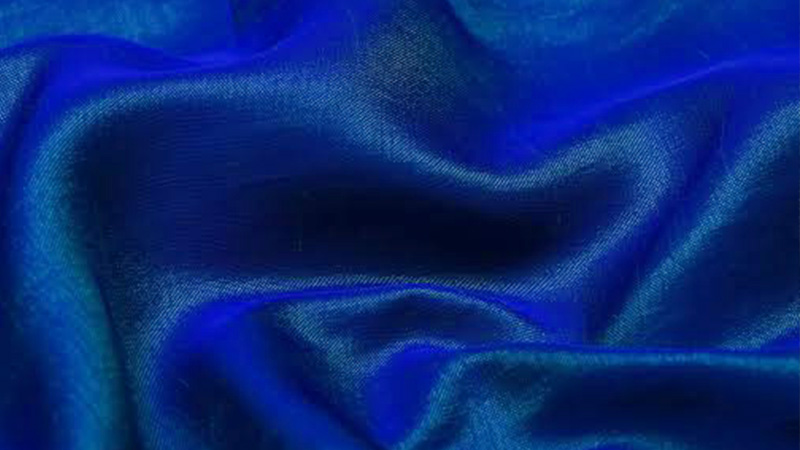
Taffeta is a type of fabric that is distinguished by its smooth, crisp texture. It is made from a variety of materials, including silk, nylon, cuprammonium rayons, acetate, and polyester.
The word “taffeta” has its origins in the Middle East, specifically in Persian, where it is derived from the word “tāfta,” meaning “silk” or “linen cloth.” This word was later borrowed into Old French and Old Italian, where it took on its modern form.
Today, taffeta is most commonly used in formal wear and bridal gowns, as the fabric’s crisp texture provides a luxurious look. It is also often used for decorations and drapery, as its texture adds an elegant touch to any room.
7. Linen
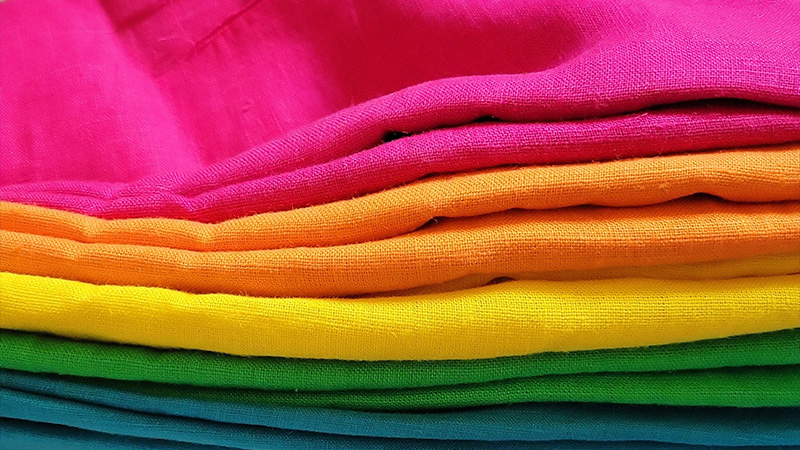
Linen is a textile made from the fibers of the flax plant, which is a very strong and absorbent material. This makes it an ideal choice for apparel in hot weather, as its quick drying and breathable qualities make it comfortable to wear.
It is also valued for its durability and strength, meaning it can be used in a variety of garments. Linen can be manufactured in a variety of ways, including from the flax plant fiber, yarn, and woven or knitted textiles.
This means that linen can be used to create a range of items, such as clothing, bedding, and towels. Linen also has a luxurious, elegant appearance, making it a popular choice for curtains, tablecloths, and other home decor items.
Additionally, its absorbent qualities make it ideal for use in the kitchen too, as it can be used to dry dishes and absorb spills.
8. Silk
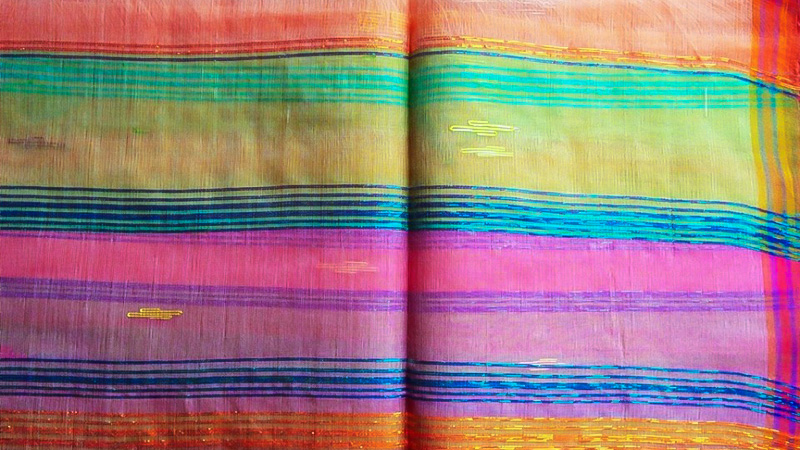
Silk is a type of natural protein fiber that can be used for weaving textiles. It is made up of two main components: fibroin and sericin.
Fibroin is a tough, fibrous protein that gives silk its strength and durability, while sericin is a glue-like substance that binds the strands of fibroin together.
The most well-known type of silk is obtained from the cocoons of the larvae of the mulberry silkworm, Bombyx mori, which is reared in captivity. The process of harvesting silk begins with the domestication of the silkworm.
The silkworms are fed a diet of mulberry leaves, and as they mature, they produce a cocoon made of a single strand of silk fiber. The cocoons are then harvested and the silk fiber is extracted and spun into thread.
The silk thread is then used to make fabrics, such as clothing, upholstery, and curtains.
9. Georgette
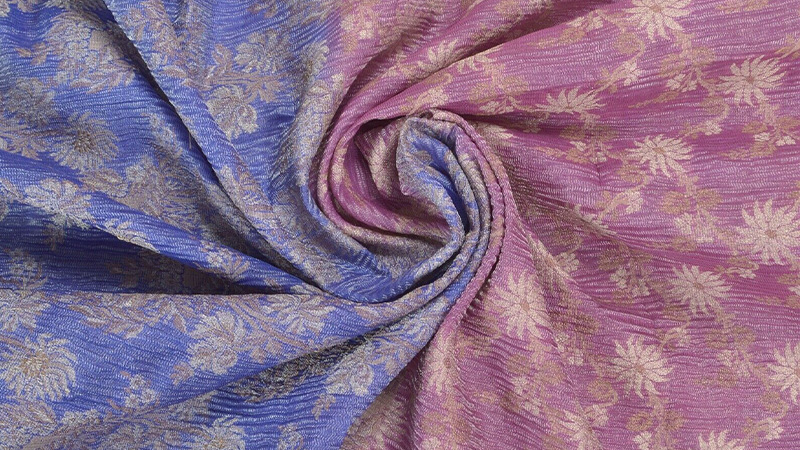
Georgette is a type of fabric with a unique appearance and texture. It was named after the pioneering French dressmaker Georgette de la Plante. This fabric is made from highly twisted yarns which gives it a crinkly surface.
This crinkly surface is created by the alternating S- and Z-twist yarns in both the warp and the weft of the fabric. Georgette is a very lightweight fabric that has a dull finish.
It is often used in women’s clothing, such as blouses, skirts, and dresses.
It is an ideal fabric for clothing that needs to drape nicely as the crinkled texture is designed to hold shape and fit comfortably. Georgette is also a very durable fabric and can withstand a lot of wear and tear.
Georgette was originally made from silk, but now it can be made from a variety of other fabrics such as polyester and rayon. It is also very easy to dye, so it is available in a wide range of colors.
Georgette is a versatile and stylish fabric that has been used in fashion for centuries.
10. Denim
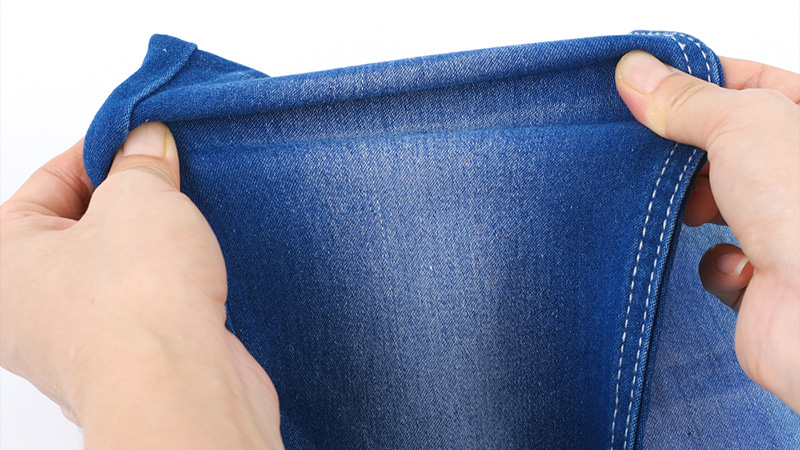
Denim is a heavy-duty cotton fabric, commonly used to make jeans. It is constructed using a twill weave, which is created when two or more warp threads are passed over and under the weft threads.
This weaving technique produces a diagonal ribbing pattern, which is the main feature that differentiates denim from cotton duck. The twill weave also makes denim fabric thicker and more durable than other types of cotton fabric.
Denim is often dyed to a blue color, but it can also be found in different colors, such as white, black, and gray. It is a very versatile fabric and can be used to make a variety of clothing items, including shirts, jackets, skirts, and pants. Denim is also popular for upholstery, bags, and other accessories.
11. Polyester
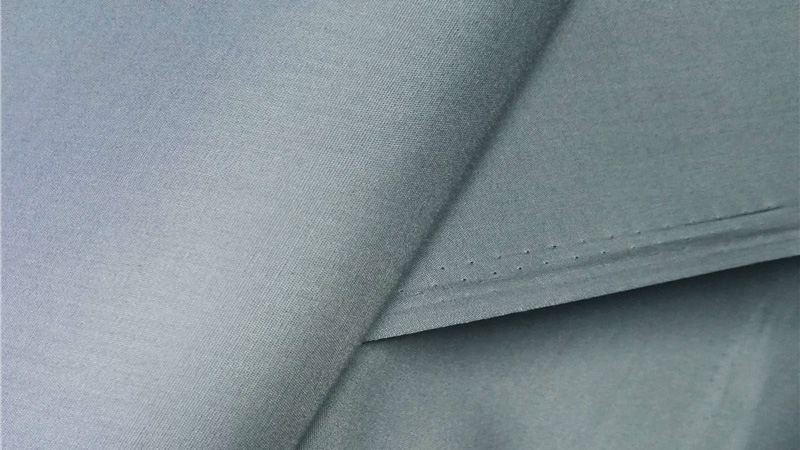
Polyester is a type of polymer that is composed of a repeating chain of ester functional groups. This ester functional group is found in each unit of the polymer’s main chain.
Polyester is a very versatile material and is used in a variety of applications, such as clothing, upholstery, and carpets. When discussing polyester as a specific material, it typically refers to a type called polyethylene terephthalate, or PET.
PET is a thermoplastic polymer that is widely used in manufacturing processes. It is strong and durable, making it an ideal material for products that need to last for a long time, such as furniture and rugs.
It can also be recycled, making it an environmentally friendly choice.
PET is also used in the production of food and beverage containers, as it is resistant to heat and chemicals. In addition to its practical uses, polyester is also used in fashion.
Clothing made of polyester is lightweight and wrinkle-resistant, making it a popular choice for both casual and formal wear. Polyester can also be blended with other fabrics, such as cotton and wool, to create unique textures and patterns.
Overall, polyester is a highly useful and versatile material that is used in many different industries. Its versatility and durability make it a popular choice for both practical and fashion applications.
12. Satin
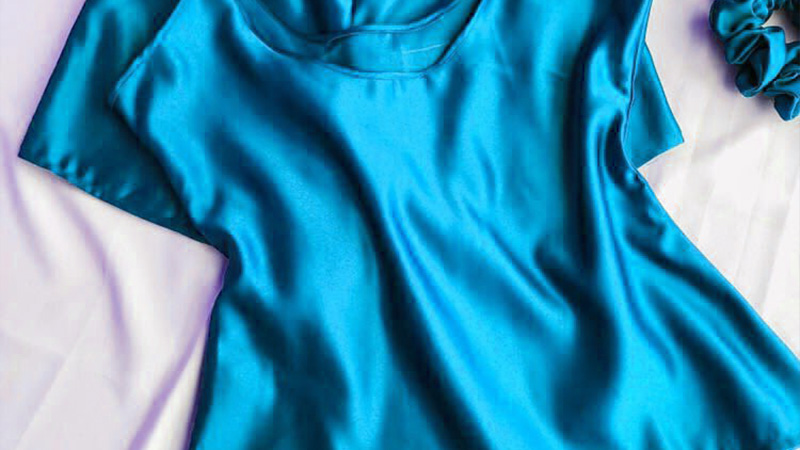
A satin weave is a type of fabric weave that creates a glossy, smooth, and lustrous material. It is characterized by a glossy top surface and a dull back and is not as durable as other weaves due to its tendency to snag.
Satin weave is one of the three main types of fabric weaves, along with plain weave and twill weave. Plain weave is the most common type of weave and is the simplest form of weaving fabric.
It is created by the over-and-under pattern of the warp and weft threads, which are interlaced at right angles.
This creates a strong and durable fabric and is used for a variety of products such as upholstery, clothing, and more. Twill weave is a type of weave that creates a diagonal pattern on the fabric and is usually more durable and heavier than plain weave.
The diagonal pattern is created by the interlacing of the warp and weft threads and is used for a variety of products such as denim jeans, drapery, and more. Satin weave, on the other hand, is a type of weave that produces a glossy, smooth, and lustrous fabric.
It is created by passing the weft threads over and under multiple warp threads, and the threads are tightly woven together to create a very smooth and glossy surface.
The back of the fabric is usually duller in comparison, and it is not as durable as other weaves due to its tendency to snag. Satin weave is used for a variety of products such as lingerie, blouses, and more.
13. Poplin
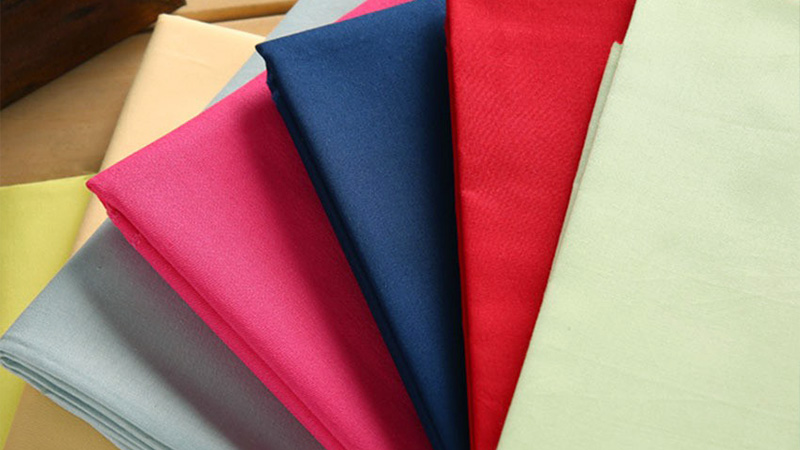
Poplin, also known as tabinet, is a lightweight fabric made from a range of fibers such as wool, cotton, or silk. It is characterized by a vertical warp and a horizontal weft.
The fabric is woven in a plain weave pattern, which creates a distinctive corded texture.
The weave of poplin fabric gives it a strong structure, making it an excellent choice for clothing and other items that need to be durable. Poplin can also be blended with other fibers to create fabrics with different properties and textures.
The versatility of poplin makes it an ideal choice for a variety of applications, from clothing to home decor. Poplin is a popular choice for formal attire, with its classic look and elegant texture.
It is also used in a variety of casual garments, such as shirts, skirts, and pants, and for a range of accessories, including hats, bags, and scarves.
Poplin can be dyed and printed to create unique designs and patterns, making it a favorite choice for designers who want to create unique items.
14. Wool

Wool is a natural fibre obtained from a variety of animals, the main source being sheep. It is also taken from other mammals such as goats, rabbits, and camelids.
It is a soft, absorbent material that offers excellent insulation and is very durable.
Wool has been used for centuries to make clothing, blankets, and other items. In addition to animal wool, there are also inorganic materials that can be used as a substitute for wool.
These materials are known as mineral wool and glass wool and they are made from a variety of materials such as steel, glass, or rock wool.
These materials have properties that are similar to wool, such as absorbency and insulation, but they can also be more durable and resistant to fire than animal wool. Mineral and glass wools are often used in insulation and soundproofing applications.
15. Rayon
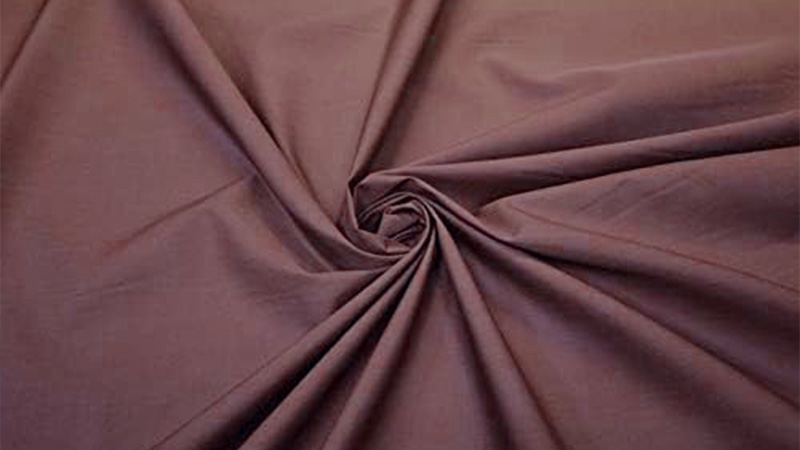
Rayon is a semi-synthetic fiber that is made from regenerated cellulose, which is derived from natural sources such as wood and related agricultural products.
It has a similar molecular structure to cellulose, which makes it a more affordable alternative to other man-made fabrics. Rayon is known by many different names, such as viscose, sabra silk, and cactus silk.
It is a popular fabric choice due to its softness, breathability, and durability. Rayon was first developed in France in the late 19th century, and it has gone through many improvements and advancements since its introduction.
The process for making rayon involves breaking down the cellulose molecules into a liquid form, and then spinning it into a continuous thread. This thread is then woven into fabrics of various textures and patterns.
The end product is a fabric that has a texture similar to that of natural fabrics but with more durability. Rayon is known for being comfortable and lightweight, making it ideal for a variety of clothing items, such as blouses, dresses, and skirts.
It is also used to make home furnishings, such as curtains and upholstery. Rayon is a popular choice for summer clothing due to its breathability and moisture-wicking capabilities.
It is also easy to care for, as it can be machine-washed and dried.
Overall, rayon is an affordable and versatile fabric that is used in a variety of clothing and home furnishings. It is comfortable, breathable, and durable, making it a great choice for those who want quality fabrics at an affordable price.
16. Lawn Cloth
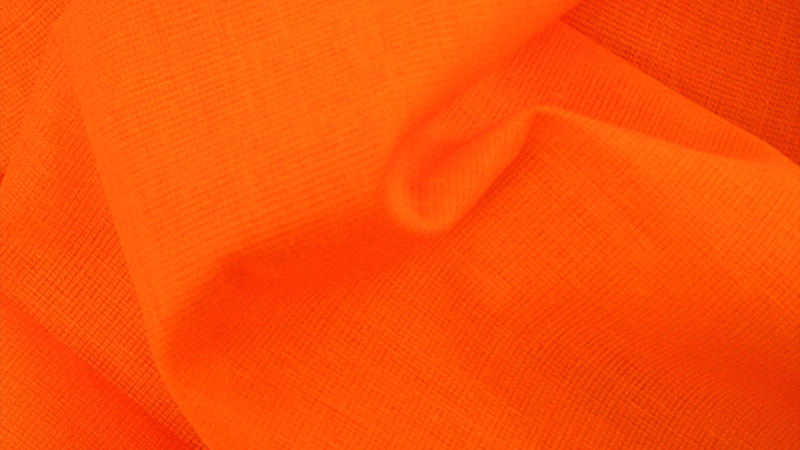
Lawn cloth is a lightweight fabric that is used for apparel, linens, and other items. It is made from combed cotton and is noted for its softness and durability.
The term lawn also refers to linen fabric, and is sometimes referred to as “handkerchief linen”.
It is made with a plain weave, meaning that the warp and weft yarns are woven in an over-under pattern. It is usually very fine and is a popular choice for making clothing, bedding, and other items that require a lightweight fabric.
Other terms that are used to refer to lawn cloth include batiste and nainsook. These fabrics are often used in summer garments, as they are lightweight and cool to the touch.
Lawn cloth is also commonly used for embroidery, as it is a smooth and sturdy fabric that can easily be decorated with intricate designs.
17. Lace
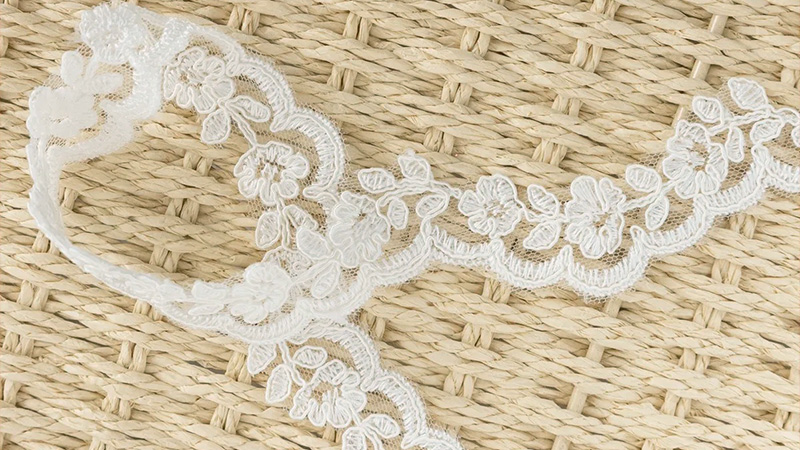
Lace is a beautiful and intricate fabric that has been used for centuries to adorn clothing and other items. It is made from yarn or thread, which is woven into an open, web-like pattern in either a machine or manual process.
Needlelace and bobbin lace are the two main categories of lace, and each is made in its own unique way.
Needlelace requires the use of a needle and thread to create a fabric by looping and knotting the thread, while bobbin lace uses a specialized technique that requires several bobbins and a pillow to create the intricate pattern.
Other types of lace include knitted and crocheted lace, which are created by using knitting needles or crochet hooks to create a lacy pattern. All types of lace are beautiful and exquisite and can be used to add a touch of elegance to any item.
18. Voile
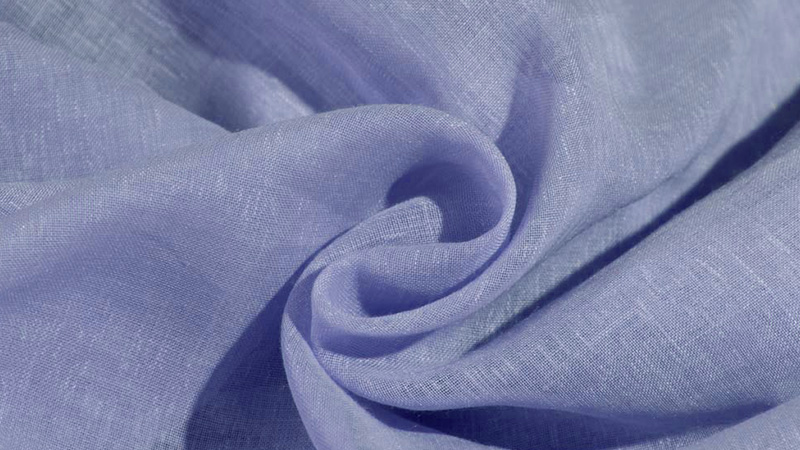
Voile is a delicate, lightweight fabric with a soft, sheer texture. It is typically composed of 99% cotton or a blend of cotton, linen, and/or polyester.
The word “voile” is derived from the French word for “veil,” which is indicative of its gauzy, airy feel.
Voile is most commonly used in soft home furnishings such as curtains, valances, and bedding. In tropical climates, voile is also a popular window treatment, as it allows natural sunlight to filter through while still providing some degree of privacy.
Additionally, voile is often used to make mosquito nets, as its lightweight and airy texture make it an ideal material.
19. Brocade
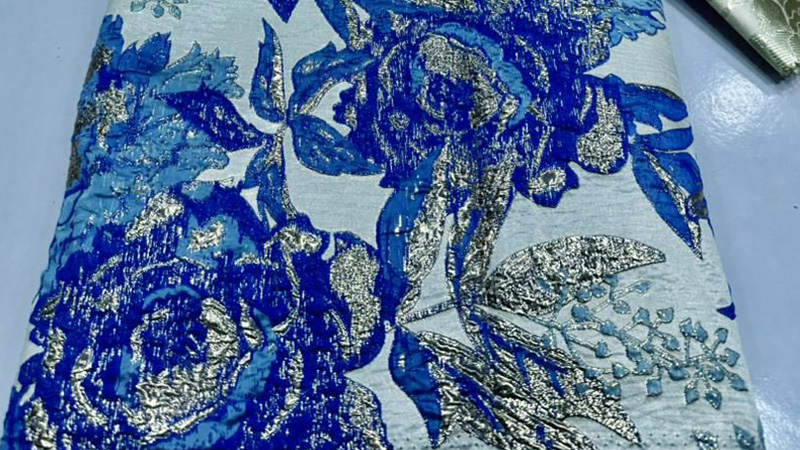
Brocade is a fabric that is intricately and beautifully woven, usually in silk, and sometimes with gold and silver threads for extra decoration. The fabric is usually a combination of two or more colors and can be used for a variety of clothing and decoration pieces.
It is a type of jacquard woven fabric, meaning that a complex pattern is woven into the fabric itself, rather than printed onto it. The pattern is usually a repeating one and may feature a variety of shapes such as stars, flowers, and geometric patterns.
Brocade is especially popular for use in formal clothing, such as evening gowns, as its intricate designs help to create a luxurious look. It is also popular for use in interior decoration, such as upholstery, curtains and bedspreads.
The use of gold and silver threads helps to create an added sense of opulence and grandeur.
20. Flannel
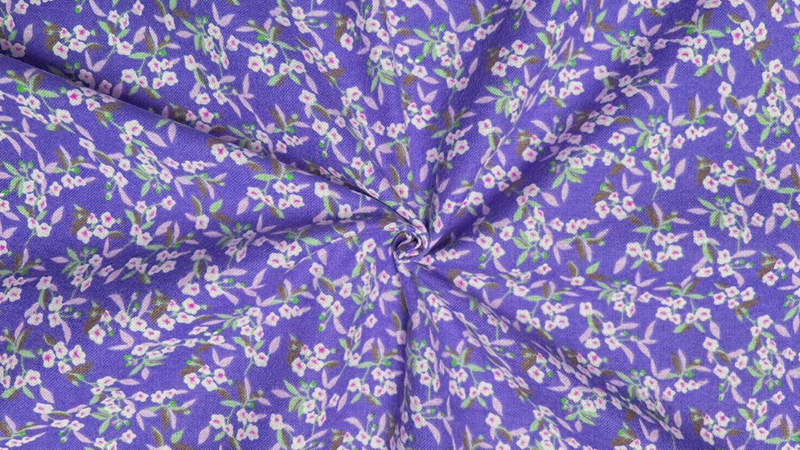
Flannel is a material that is soft to the touch and comes in a range of thicknesses. It is typically made with either wool, cotton, or synthetic fibers.
It is most commonly used to make clothing items with a tartan pattern, such as blankets, bed sheets, and sleepwear.
Flannel garments are highly valued for their warmth and comfort, making them ideal for colder climates. Originally, flannel was made with carded wool or worsted yarn.
Carded wool is wool that is cleaned, combed, and then rolled into thin strands.
Worsted yarn is made from long-staple fibers that have been combed and twisted together to create a strong, smooth yarn.
Nowadays, flannel is available in a variety of materials depending on the desired look and feel. Flannel is a popular choice for sleepwear due to its soft texture and breathability.
It is also a great option for making blankets, as it is warm and cozy.
The unique tartan patterns are often used to create fashionable garments, such as tartan skirts and shirts.
Additionally, flannel bed sheets are a popular choice for bedrooms, as the fabric is lightweight but also warm. Overall, flannel is a versatile material that has been popular for centuries.
It is available in a range of thicknesses and materials, making it suitable for a variety of uses. From tartan clothing to cozy blankets, flannel is sure to provide warmth and comfort wherever it is used.
21. Broadcloth
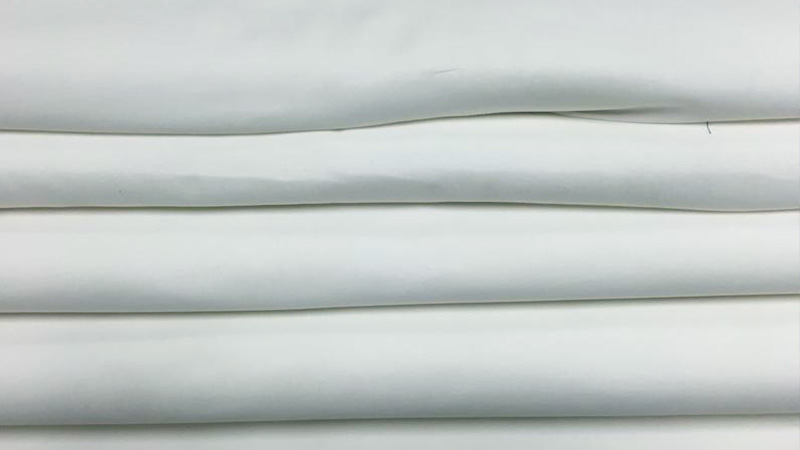
Broadcloth is a type of fabric that has a distinct look and feel. It is woven from wool in a plain weave pattern, meaning the weft yarns pass over and under the warp yarns in a regular alternating pattern.
Its defining characteristic is that it is woven much wider than its finished width and then heavily milled to shrink it to the desired size. This milling process is what gives broadcloth its signature dense, smooth, and finely textured feel.
The shrinkage also gives broadcloth its characteristic firmness and crispness, making it perfect for creating structured garments like suits, dresses, and other formal attire.
Broadcloth has been around for centuries and is still widely used in the fashion industry today.
22. Cambric
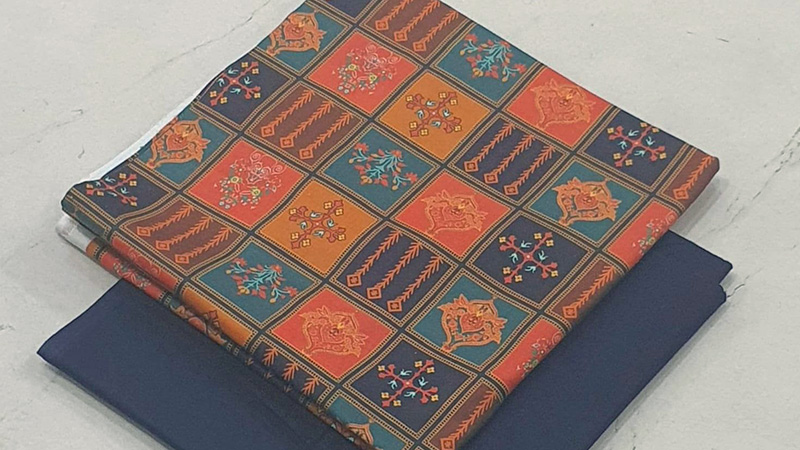
Cambric or batiste is a type of fabric that is renowned for its fine, dense weave. It originated from the French commune of Cambrai and is made of either linen or cotton.
The fabric is made by first weaving it in a greige state, then bleaching it, before it is piece-dyed and often finished with a glazed or calendered finish.
This type of fabric has been used for centuries, with the term first coming into use during the 18th and 19th centuries, when it was applied to cotton fabrics.
The lightweight and plain-weave nature of cambric or batiste fabrics make them ideal for use in a variety of garments and furnishings.
They are often used for delicate materials such as lingerie, blouses, and dresses, but are also commonly used for tablecloths, napkins, and bed linens.
23. Damask
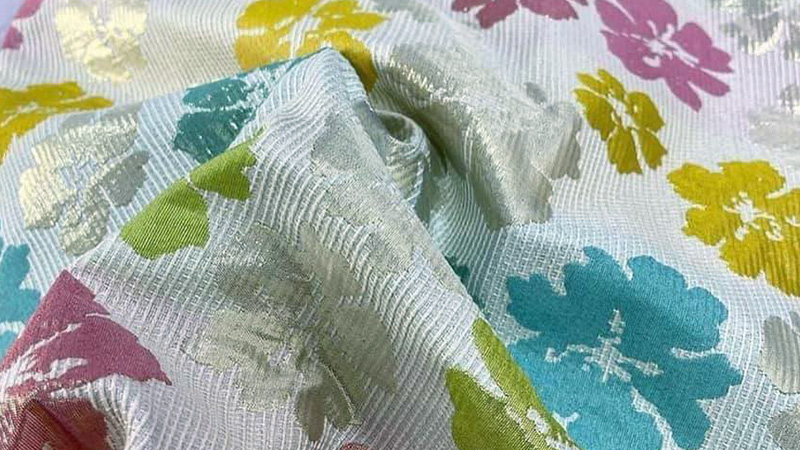
A Damask is a type of fabric that is characterized by a reversible pattern created by weaving. It is made up of a variety of materials, including silk, wool, linen, cotton, and synthetic fibers.
In order to create the pattern, one warp yarn and one weft yarn are used.
A warp-faced satin weave is usually used to create the pattern, while the ground is formed with a weft-faced or sateen weave. This type of weaving results in a fabric that is both sturdy and elegant.
The patterns created by weaving are typically intricate and complex, creating a luxurious look. Damask is often used to make formal clothing, upholstery, and drapery.
It is also often used as an accent fabric or to provide an elegant backdrop for other fabrics.
24. Batiste
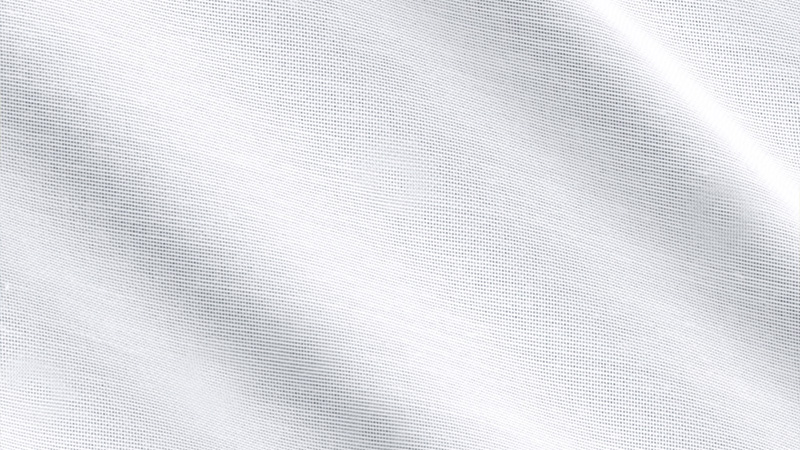
Batiste is a lightweight, semi-sheer fabric known for its soft, delicate, and airy qualities. Made from cotton, wool, or synthetic fibers, it boasts a plain weave and fine, even texture.
Often used for making blouses, dresses, and baby clothing, batiste drapes beautifully, making it ideal for flowy and breathable garments. Its versatility extends to its use in lingerie and handkerchiefs.
This fabric’s breathability makes it perfect for warm weather, offering comfort and elegance. Whether for a summer sundress or a chic blouse, batiste’s gentle touch and timeless appeal continue to make it a popular choice for creating charming and comfortable attire.
Conclusion
The choice of material for a dress is a crucial factor that significantly impacts its overall appearance and comfort. When selecting a dress, it’s essential to take into account not only your personal style but also practical considerations like climate, lifestyle, and the occasion at hand.
Different dress materials offer unique advantages. Lightweight and breathable fabrics like cotton and linen are perfect for hot summer days, while luxurious materials like silk and velvet add an element of elegance for special events.
Denim and jersey provide comfort for casual wear and wool and leather offer warmth for colder seasons.
By considering the fabric and construction of your dress, you can ensure that you not only look fashionable but also feel comfortable and confident in any setting.
So, whether it’s a breezy summer frock or a cozy winter ensemble, the right dress material can make all the difference in enhancing your style and comfort.
Leave a Reply